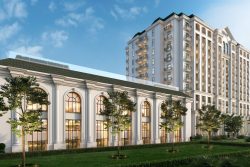Dear Editor,
Please permit my letter to be published in your daily column, so I can be given the opportunity to have my take on the planning of our Amerindian Heritage Month program of activities. I also wish to highlight some of the contributions our foreparents made towards keeping the environment intact and healthy while their sterling contribution to the economic developmental of this country, at its earliest stage, must be made known to our Guyanese populace. Some of these facts are most often times, down-played by our political actors of the day, for their selfish agenda. During the last two years, we did not witnessed the usually grand annual heritage month celebrations that was initiated by late president Cheddie Jagan due to the Covid 19 pandemic.
This occasion is in honour of our first Amerindian member of parliament, the late Mr. Stephen Campbell. However, with the resurgence of this very important event in the month of September, 2022, it is hoped that there will be a spiritual rebirth of our very rich cultural heritage. I implore our elders and leaders of the various indigenous communities, to seek a shared vision for the betterment of our people and to be the guardians of our culture and traditional lands in true brotherhood of peace, love and respect for each native group. Therefore, we must avoid being influenced, trapped and be blind folded, in pursuit of supporting racial supremacy and political witch-hunt which appears to be tearing apart the very human fabric of our beautiful land of six races.
We, the Indigenous peoples of this country, must at all cost come together in a more unifying manner to celebrate Amerindian Heritage Month program of activities in a more meaningful way. However, there is need to take a more holistic approach in the planning of this annual event. In this circumstance, there should have been more inclusive participation with other indigenous stakeholders, such as the APA, GOIP, and other groups. This can definitely send a clear message that a democratic process was being used in the planning of this agenda, with the subject Ministry of Amerindian Affairs. Therefore, we must begin the process somewhere and somehow, by putting together a very strong advocating body to challenge the present status-quo. Yes! We must make a concerted effort to have the brighter side of our rich and indisputable history be given that recognition, like any other Guyanese history that is on record.
Hence, we must redirect our energies to see ourselves rising from where we are yoked to a stigma of poverty stricken peoples as a result of those who continue to invoke stereotype and prejudices upon us. In this regard, we must put an end to these psychological and blatant abuses that are perpetrated on the wellbeing of our people particularly, by those in authority, who just idly stand by and look on while the damage is being done. The indigenous peoples of this country does not enjoy private property, but a tenure of land, collectively. In so doing, the other sectors of society must come to grips with that fact and put aside their negative perception towards our socio-cultural levels of existence. We are a unique people, with the rights to our own spiritual beliefs and the connections that we share with Mother Earth. As a matter of fact, we the indigenous peoples, have for centuries contributed and made tremendous efforts in the protection of our lands as a whole.
Today our forests are no longer intact. Most importantly the ecological spaces where we still occupy, alongside the frontiers of our borders, are presently under threat by claims made from neighbouring Venezuela while there are large swaths of lands being destroyed illegally by miners and timber companies. Our traditional knowledge in herbal medicine must remain intact and must not be allowed to become something of the past. This must be handed down to our grands and great grands. For example, there is the medicinal plant called “aiomorda” (Lokono) which was used traditionally to induce vomiting. Also the “wiri plant” a wild nutmeg that is dispensed to subside pains when bitten by snakes. Some of these traditional methods that are practiced by the indigenous peoples are still relevant to our culture but are equally important to the world of science.
Guyana is a land of great wealth where our great foreparents had graced hundreds of years ago. In their native languages they named all the beautiful mountains, rivers, lakes and falls; rapids and creeks. There are so many amazing stories that followed their footsteps, but are yet to be told to our Guyanese audience and afar. Editor, I wish to suggest that there should be something more educational in the planning process of the agenda of our annual heritage month celebrations. Most importantly, in the form of historical workshops, indigenous storytelling, dramatic poetry; verse speaking and creative arts and talent. These activities can very well be documented and become a more reliable source of information. The indigenous people have made significant contributions in structuring the economic pillars with the advent of trade and commerce in our country.
Very important information from researches can be found in volumes of documents in Hague, Amsterdam, Middleburg, Brussels; and Paris. London, Lisbon, Madrid, Rio de Janeiro; Belem, Georgetown, Paramaribo, and Caracas. Such have gathered incontrovertible evidence that trade between the Europeans and the First Peoples of this country were very strong in order to obtain export commodities, which had dominated colonial life well into the 18th century. The Dutch traded knives, axes, cutlasses, beads; razors, firearms and mirrors for a number of tropical forests products. Amerindian products in demand by the Europeans included tobacco, indigo, cotton, timber, resins, gold and precious stones. The annatto seeds were also an attractive commodity to the Europeans, from which dyes were used for food colouring, particularly to dye butter and cheese as well as shades for cotton fabrics. The word hammock is derived from the Arawak word “hamaca” and has since been adopted in many European languages. The hammock became the single most valuable commodity in commerce between Europeans and Amerindians. The hammock also became a standard ship gear for the French, Dutch and English navies.
Evidence also suggests that Amerindians were the first nation from the Guianas to be taken to Amsterdam and other European countries to study in various disciplines. When they returned, they served in various fields, such as interpreters, navigators, and played very important roles in collecting information and the editing of notes of hinterland cartography. These edits gave visibility to the complicated river networks and made it easier for hinterlands’ river navigation and communications for commerce and trade. The geopolitical changes brought by the Europeans here in Guiana was never a bed of roses for the Amerindians, who were the only natives that dwelled here at the time of land grabbing. Such changes were at first fought against by the indigenous population, who shared the territory among themselves.
While European cultural and economic integration could not have been prevented by the indigenous population, they consistently engaged in acts of resistance and warfare to secure existence and maintaining their ecological spaces; which still remains important to us today. Our foreparents did resist and fought relentlessly for their freedom against the capitalist civilization and other projects that eventually took over our territories and which have had a profound effect on the lives of the indigenous peoples. Despite these adversities, including the dreadful and contagious diseases brought by the Europeans, it was the Amerindians who rendered much needed assistance to make their survival possible in the interior. The Amerindians introduced farming of provision and hunting of wild meat and fishes. In early 1666 an expedition, under the command of British John Scott, and with many Amerindians among the force, successfully assaulted and captured a Dutch fort in the Pomeroon.
Amerindian nations were also recruited in putting down slave rebellions. Despite their complex and shifting alliances in conflict with other tribal Amerindians and enslaved Africans, as well as the European planters, Amerindians harboured maroons and made alliances with slaves in insurrections against European planters. In 1790 it was reported to the Council of the Indies, that there were over ten thousand fugitives (runaway slaves) in the interior of Essequibo, Demerara, Berbice and Suriname. Information revealed that the Amerindians were the only people who had extensive contacts with these black rebels. Creole blacks of both slave and free status travelled widely in the interior. They were fluent in Amerindian languages and sometimes secured alliances through marriages and kinships relations. They were important middlemen between Amerindians and Dutch companies and provided important diplomatic services in negotiations with Amerindians. Their mixed creole offspring would be known as “bovianders”.
It must be noted also, that Amerindians never had racial antipathy at this juncture in history. While some Amerindians did play racialized roles during this period, racism was uneven and incomplete. Amerindians who were closely connected to European planters were the groups who manifested racism. The Europeans also had often times armed their alliances with fire arms to wage war against other native groups. The Arawaks were asked to take the responsibility to act as intermediaries at some point when things became uncontrollable in these tribal wars. Editor, the historical events of the First Peoples of this country requires more in-depth analysis by our historians so that our past can be amplified and become a part of our education curriculum and taught in our schools across the country. Such an effort can be a start to remove the stigma attached to the humble natives of this country, who are most often times humiliated, by others who claim that we did absolutely nothing to contribute to the development of our country.
It is with great hope that wisdom will prevail at this juncture in time for us, the Indigenous People, where we may be able to overcome the debacle that befell us, and to come to grips with the realities of the present political, economic and cultural trajectories, hence, we can very well be on our way to the beginning of healing the psychological wounds of prejudices, discrimination and stereotyping. Editor, it is time now for the whole truth to be revealed, so we can all join in as a Guyanese nation to celebrate our heritage in good spirit as “One People, One Nation, One Destiny”! “Happy Amerindian Heritage Month Celebrations 2022 to all”!
Sincerely,
Mark Anthony Rodrigues




